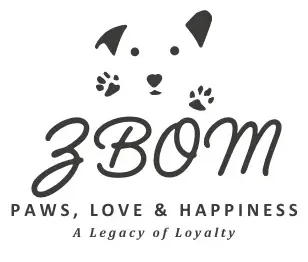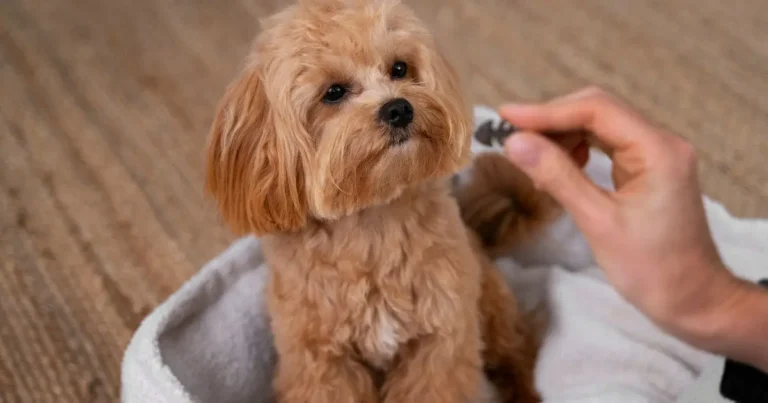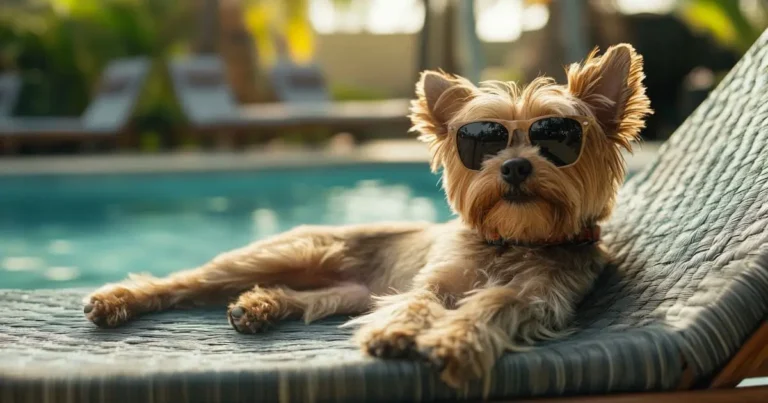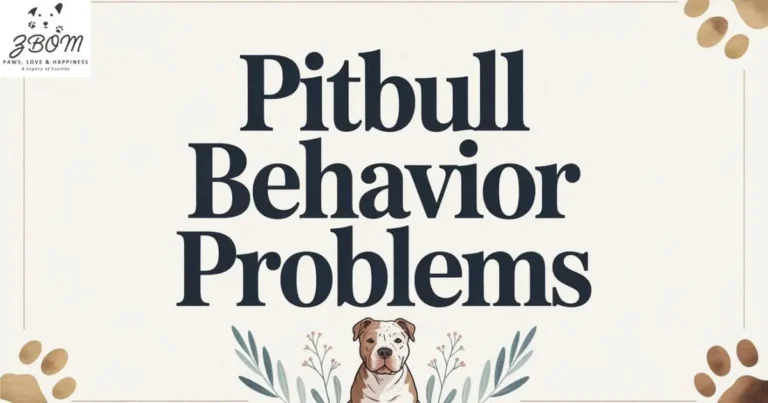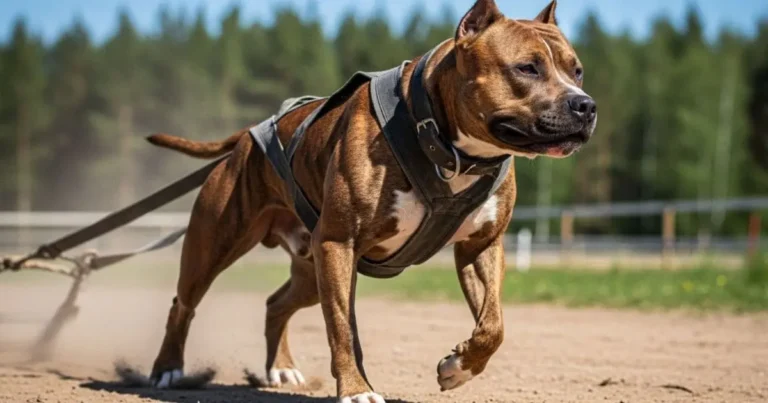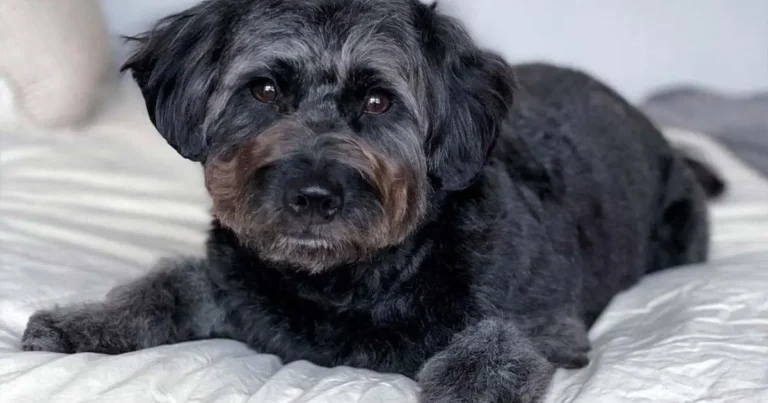
How to Maintain a Well-Groomed Labradoodle Coat
If you’re a Groomed Labradoodle owner, you already know that magnificent coat is both a blessing and a responsibility. Whether your dog has tight curls inherited from their Poodle parent, loose waves, or something in between, that adorable teddy bear look doesn’t maintain itself. In fact, without proper care, that beautiful coat can quickly become a matted, uncomfortable mess that causes real problems for your dog.
Labradoodles were originally bred to be hypoallergenic guide dogs, combining the Labrador’s friendly temperament with the Poodle’s low-shedding coat. What nobody tells you upfront is that this designer crossbreed comes with grooming demands that catch many first-time owners completely off guard. That gorgeous fleece or wool coat might shed less than a purebred Lab, but it tangles faster than you’d ever imagine, traps dirt like a magnet, and requires consistent attention to stay healthy.
Here’s the truth: maintaining a Labradoodle’s coat isn’t impossibly difficult, but it does require understanding what you’re working with and staying consistent with the right techniques. Different coat types need different approaches, the tools you use actually matter, and there’s a big difference between brushing correctly and just running a brush over the surface while mats form underneath.
This guide will walk you through everything you need to know about keeping your Labradoodle’s coat in great condition—from choosing the right tools and establishing a realistic grooming routine, to dealing with mats, deciding between home grooming and professional help, and understanding how diet and health affect coat quality. Whether you’re a new Labradoodle owner feeling overwhelmed or you’ve been struggling with grooming challenges for years, you’ll find practical strategies that actually work in real life, not just in theory.
Also Read: How Old does a Dog have to be a Breed
Short Answer About Different Coat Types Require Different Labradoodle Grooming Schedules
Different Labradoodle coat types—curly, wavy, or straight—need grooming at varying frequencies. Curly coats require more frequent brushing and professional trims to prevent matting, while wavy coats need moderate attention to keep tangles under control. Straight coats are easier to maintain but still benefit from regular brushing and occasional trims. Tailoring the grooming schedule to the coat type helps keep the dog comfortable, healthy, and looking its best.
Different Coat Types Require Different Labradoodle Grooming Schedules
I have dogs with different coat types and multiple dogs with varying coat types and different coats. They have different grooming schedules showing grooming schedule variation and schedule differences based on their specific needs.
Wool Coat Characteristics in Older Dogs
My two older dogs, two older dogs, senior dogs, and older pets both have a wool type coat and wool coat type with wool texture. It is very curly (very curly coat and curly texture), a little wiry (wiry texture and slightly wiry), and not the easiest to brush (difficult to brush, hard to brush, challenging coat, and brushing difficulty). It is most like a poodle coat (poodle-like coat, similar to poodle, and poodle comparison).
Also Read: How Long are French Bulldogs Pregnant
Regular Grooming and Short Coat Maintenance
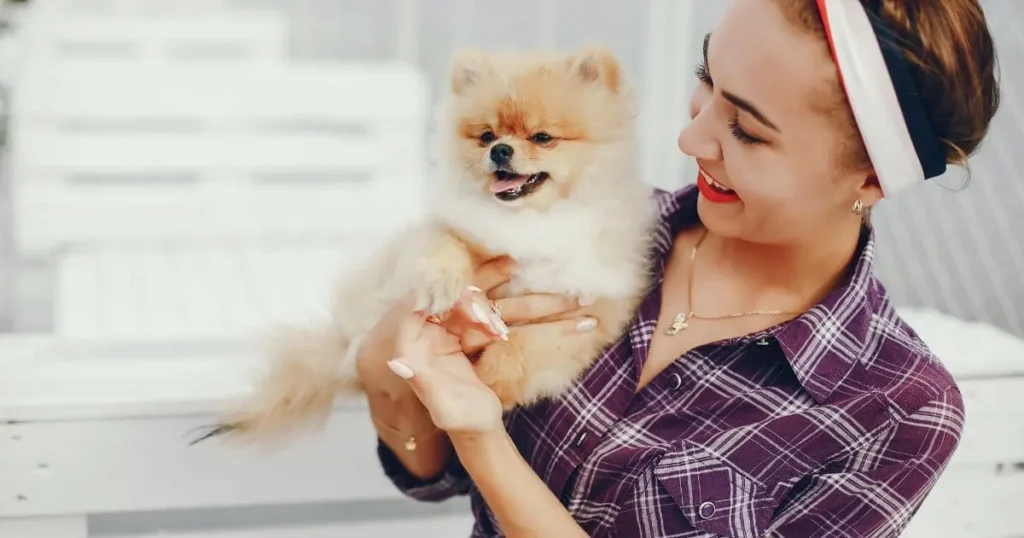
These two get the most regular grooming appointments with regular grooming, frequent grooming, grooming appointments, and professional grooming. I keep them pretty short with keep short, short coat, short length, and maintain short approach.
The Field Cut Style and Specifications
Sometimes called the Field Cut (Field Cut style and field trim), they are trimmed all over (trimmed uniformly, uniform trim, all over trim, and body trim) at the same length (same length trim and even length) to about 1/2 inch (1/2 inch length, half inch, half inch trim, and short trim length). This represents a specific cut type and trim style.
Low Maintenance Between Professional Grooming
With this type of cut and frequency (grooming frequency and appointment frequency), I do not need to brush them out at all (no brushing needed, don’t need to brush, brushing not required, and no home brushing) between grooms (between appointments, between visits, and inter-grooming period). This creates maintenance-free and low home maintenance conditions.
Also Read: How many puppies Do French Bulldog Have
Comprehensive Multi-Dog Grooming Strategy
Managing dogs with different coat types (multiple dogs with varying coat types and different coats) requires different grooming schedules (grooming schedule variation and schedule differences). My two older dogs (two older dogs, senior dogs, and older pets) both have a wool type coat (wool coat type with wool texture) that is very curly (very curly coat and curly texture), a little wiry (wiry texture and slightly wiry), and not the easiest to brush (difficult to brush, hard to brush, challenging coat, and brushing difficulty). It is most like a poodle coat (poodle-like coat, similar to poodle, and poodle comparison).
These two get the most regular grooming appointments (regular grooming, frequent grooming, grooming appointments, and professional grooming). I keep them pretty short (keep short, short coat, short length, and maintain short). Sometimes called the Field Cut (Field Cut style and field trim), they are trimmed all over (trimmed uniformly, uniform trim, all over trim, and body trim) at the same length (same length trim and even length) to about 1/2 inch (1/2 inch length, half inch, half inch trim, and short trim length) as a specific cut type and trim style.
With this type of cut and frequency (grooming frequency and appointment frequency), I do not need to brush them out at all (no brushing needed, don’t need to brush, brushing not required, and no home brushing) between grooms (between appointments, between visits, and inter-grooming period), creating maintenance-free and low home maintenance conditions for these dogs with wool coat type.
Also Read: How Much are Fluffy French Bulldogs
Artistic Grooming Techniques
And of course, there are all sorts of artistic grooming techniques, creative grooming, grooming styles, artistic styles, fancy cuts, and styling options available. I often see the ears left longer (longer ears and long ear fur) and tail left longer (longer tail and long tail fur) than the rest of the body (rest of body and body length). And the Teddy Bear (Teddy Bear cut and Teddy Bear style) is always cute (cute style and adorable cut).
Personal Grooming Limitations and Professional Solutions
I am certainly no groomer (not a groomer and amateur groomer). I’ve tried it plenty with home grooming attempts and tried grooming but am a failure (failed at grooming) when it comes to the clippers (clipper failure, bad with clippers, and struggle with clippers).
If you are like me (if like me and similar situation), find a good groomer (find groomer, locate groomer, good professional, and quality groomer). Keep a regular schedule (regular appointments, consistent schedule, appointment schedule, and maintain schedule) with them based on your dog’s needs (dog’s individual needs, specific needs, and custom needs).
Critical Ear Hair Maintenance
Very important (ear hair importance and very important task) that they clear the ear hair (ear hair clearing, clear ear canal, remove ear hair, and ear hair removal) from your dog’s ears. Clearing the ear hair will help prevent ear infections (prevent infections, infection prevention, and ear infection prevention) as well as ear odor (prevent ear odor, odor prevention, and smell prevention).
Also Read: What Are Fluffy Frenchies Mixed With
Alternative Ear Hair Solutions
If your groomer does not pluck ear hair (groomer doesn’t pluck, no ear plucking, and doesn’t remove ear hair), consider this task on your own (DIY task, do yourself, self-service, and home task). Or stop by your vet (visit vet, veterinary visit, and vet appointment) a few times a year (few times yearly, several times year, and annual visits) to have them take care of the problem (vet handles, professional removal, and problem resolution) through proper ear maintenance.
Complete Grooming Management Strategy
Understanding that there are all sorts of artistic grooming techniques (creative grooming, grooming styles, artistic styles, fancy cuts, and styling options), with styles where I often see ears left longer (longer ears and long ear fur) and tail left longer (longer tail and long tail fur) than the rest of the body (rest of body and body length), including the Teddy Bear (Teddy Bear cut and Teddy Bear style) that is always cute (cute style and adorable cut).
How Much Is A Frenchie, Since I am certainly no groomer (not a groomer and amateur groomer), and I’ve tried it plenty (home grooming attempts and tried grooming) but am a failure when it comes to the clippers (failed at grooming, clipper failure, bad with clippers, and struggle with clippers), if you are like me (if like me with similar situation), find a good groomer (find groomer, locate groomer, good professional, and quality groomer) and keep a regular schedule with them (regular appointments, consistent schedule, appointment schedule, and maintain schedule) based on your dog’s needs (dog’s individual needs, specific needs, and custom needs).
Very important (ear hair importance and very important task) that they clear the ear hair (ear hair clearing, clear ear canal, remove ear hair, and ear hair removal) from your dog’s ears, Groomed Labradoodle as clearing the ear hair will help prevent ear infections (prevent infections, infection prevention, and ear infection prevention) as well as ear odor (prevent ear odor, odor prevention, and smell prevention).
If your groomer does not pluck ear hair (groomer doesn’t pluck, no ear plucking, and doesn’t remove ear hair), consider this task on your own (DIY task, do yourself, self-service, and home task), or stop by your vet (visit vet, veterinary visit, and vet appointment) a few times a year (few times yearly, several times year, and annual visits) to have them take care of the problem (vet handles, professional removal, and problem resolution) for proper ear maintenance.
Labradoodle Grooming for Puppies (8-14 weeks)

Bathing requires specific tools you’ll need and bathing supplies, tools needed including mild soap (gentle soap and soft soap), towel (towel needed), groomed Labradoodle and washcloth (cloth needed) for bath time and washing puppy.
Also Read: How to Housebreak A French Bulldog
What to Know – Bathing Caution and Knowledge
What to know and bathing knowledge includes bathing caution: avoid over-bathing and excessive bathing, as bathing too often and frequent bathing for a puppy, young puppy at this young age and puppy age, it can be very irritating to the skin causing skin irritation and irritated skin. It can cause dry skin (dry coat), red skin (red irritation), itchy skin (itchy coat), and other skin problems.
Bathing Instructions and Procedure
Instructions and bathing instructions for bathing procedure: use mild soap on a washcloth for soap application and washcloth use. Make sure never to leave the soap in their coat—avoid soap residue through never leave soap approach and proper soap removal. If you need to bathe them, we recommend warm water (warm bath) and never hot water (hot water warning). Using some very gentle soaps (gentle cleanser), rinse well for thorough rinse and complete rinse following bathing recommendations.
2. DRYING – Post-Bath Drying Process
What to know about drying and drying importance: after bathing and post-bath drying, it’s important to not leave your puppy wet. Leaving them wet (staying wet with wet puppy and wet coat) can cause low body temperatures (body temperature issues and temperature drop), creating hypothermia risk. So it’s important to dry them completely with complete drying and thorough drying.
Drying Methods and Heat Settings
While drying them using drying methods and drying process, avoid using high heat (high temperature) or a setting that is too cold (cold setting and temperature extremes). Always use the medium setting (medium heat and moderate setting) along with low speed (dryer speed, slow speed, and low velocity) on whatever dryer you are using (dryer use) on your puppy for puppy drying.
Also Read: Why Does My Frenchie Keep Throwing Up
Drying Instructions and Technique
Instructions and drying instructions: towel dry (towel drying), then lightly dry your puppy (blow drying and light drying) with low speed (speed settings) and low heat (heat levels). I advise not using the nozzle (force dryer nozzle and dryer nozzle) on your force dryer, or instead of using a hairdryer (hairdryer alternative).
3. BRUSHING – Puppy Brushing Training
Brushing and brushing routine require tools you’ll need and grooming tools, brush needed including gentle brush (soft brush), puppy safe treats (treats needed and training treats), and lick mat (lick mat use).
What to Know – Brushing Purpose for Young Puppies
What to know and brushing knowledge: when a puppy is this young at young age and puppy stage, it’s not so much about brushing out knots (knot removal) and tangle removal, because puppy hair (puppy coat and puppy fur) does not require as much maintenance (maintenance needs showing low maintenance) as an adult Doodle (adult coat comparison and adult Doodle).
Brushing a puppy and puppy training is more about getting them used to and comfortable with the sensations themselves through desensitization, acclimation, comfort building, groomed Labradoodle sensation exposure, and tactile experience.
Brushing Instructions and Technique
Instructions and brushing instructions for brushing technique: when brushing your puppy, use the gentle brush for gentle brushing. Make sure you are brushing all areas of your puppy’s coat for coat coverage, full body brushing, all coat areas, and complete coverage. Give lots of love and treats (positive reinforcement, treats during, love throughout, praise throughout, and process rewards) throughout the process and training process.
The myth of ‘non-shed’ coats
All coats shed—this is the shedding reality that many owners don’t realize. Even non shed coats including fleece coats and wool coats still shed, contradicting the non-shedding myth. The difference is in how coat shedding occurs and the shedding difference between coat types.
How Dead Coat Behaves in Different Coat Types
Any old coat, old hair, dead coat, dead hair, and loose hair behaves differently depending on coat type. In shedding coats and shedding coat types, dead coat is not dropped or shed out naturally—it’s shed naturally like a shedding coat does. The rate of shedding, shedding rate, and shedding frequency are often far lower in non-shed coats, as the coat growth cycle, growth cycle, hair cycle, and growth rate tends to be slower with a slower cycle.
Also Read: Do French Bulldogs Get Along With Other Dogs
Dropping Hair vs. Trapped Hair
Instead of dropping to the ground and dropping hair that falls to ground where hair falls like a hair coat, hair shedding, straight coat, and straight shedding does, in fleece coats and wool coats the dead coat usually gets stuck in the coat. This trapped hair, stuck hair, remains in coat, and caught in coat creates coat entanglement and hair retention with coat retention.
Key Reason for Knot and Mat Formation
This is the key reason and key reason knots occur: non-shed coats are much more likely to form knots and mats, leading to knot formation and mat formation where they form mats, develop knots, and develop mats. This happens unless the dead coat is removed through dead hair removal, coat removal, and brushing removal with regular brushing, regular grooming, and consistent brushing.
Why Non-Shed Coats Require High Maintenance
That’s also why non-shed fleece, non-shed fleece coats, wool coats, and non-shed coats are considered high-maintenance and have high maintenance reason. This maintenance comparison, hair comparison, and straight comparison shows the maintenance difference compared to a hair coat, straight coat, and shedding coats that sheds naturally.
Maintenance Requirements and Grooming Comparison
The grooming requirements differ dramatically. Fleece maintenance, wool maintenance, and non-shed maintenance demand significantly more effort explaining why high maintenance becomes necessary. Hair coats and straight coats offer lower maintenance due to their natural shedding where dead hair doesn’t create coat entanglement because it drops to the ground instead of remaining trapped.
Comprehensive Shedding and Maintenance Understanding
Understanding that all coats shed, even non shed fleece coats and wool coats still shed, helps explain the difference is that any old coat, old hair, dead coat, dead hair, and loose hair is not dropped or shed out or doesn’t drop or shed naturally like a shedding coat does. The rate of shedding, shedding rate, and shedding frequency are often far lower and show lower shedding and reduced shedding as the coat growth cycle, growth cycle, hair cycle, and growth rate tends to be slower with a slower cycle.
Instead of dropping to the ground and dropping hair that falls to ground where hair falls like a hair coat, hair shedding, straight coat, and straight shedding does, in fleece coats and wool coats the dead coat usually gets stuck in the coat as trapped hair, stuck hair that remains in coat and caught in coat, creating coat entanglement and hair retention with coat retention.
This is the key reason and key reason knots occur why non-shed coats are much more likely to form knots and mats with knot formation and mat formation where they form mats, develop knots, and develop mats unless the dead coat is removed through dead hair removal, coat removal, and brushing removal with regular brushing, regular grooming, and consistent brushing.
That’s also why non-shed fleece, non-shed fleece coats, wool coats, and non-shed coats are considered high-maintenance with high maintenance reason in maintenance comparison, hair comparison, and straight comparison showing Groomed Labradoodle maintenance difference compared to a hair coat, straight coat, and shedding coats that sheds with lower maintenance. The grooming requirements for fleece maintenance, wool maintenance, and non-shed maintenance explain why high maintenance becomes necessary compared to the shedding reality and coat shedding of fleece shedding and wool shedding where coat still sheds but creates different challenges.
Also Read: How Often Should I Bathe My Frenchie
Beware the ‘oodle puppy coat change!
An oodle pup goes through a coat change and coat transition (also called coat maturation) anywhere from 6 to 14 months of age, with this age range showing variation, though 9 to 12 months being most common as the common age for doodle puppy coat changes.
Puppy Coat Characteristics and Transition Period
That super soft, thinner, fluffy, easy care puppy coat with soft Groomed Labradoodle puppy coat, thin coat, fluffy coat, and easy maintenance characteristics (puppy fur) will transition into the adult coat and adult fur, becoming high maintenance, at least in the short term with maintenance increase and short term maintenance demands during the transition period.
What Happens During the Change
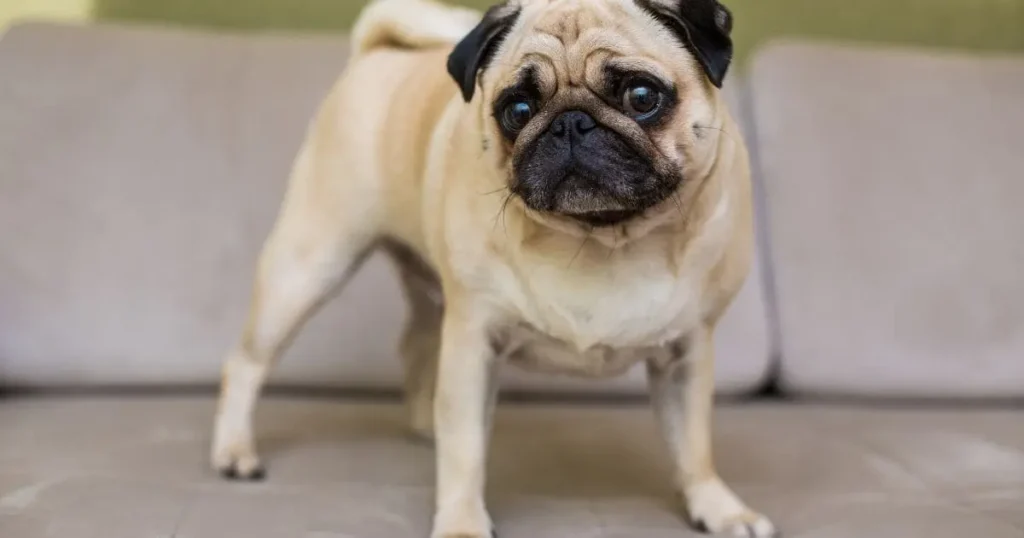
During the change and change period, the puppy coat is being replaced through coat replacement by the thicker adult coat and thicker coat. The coat texture may experience texture change and colour may change too with color change occurring. It may become less curly (less curl) or more curly (more curl and curl changes). The coat colour may darken (color darkens) or lighten (color lightens), and the rate of shedding may change through shedding changes.
Long Coat Maintenance Requirements
If you want to keep the coat long as an adult for long coat maintenance, you’ll need to keep it free of knots and Groomed Labradoodle maintain a knot-free coat that’s mat-free through knot prevention. If you can’t keep on top of the knots, you may have to clip the coat short instead, requiring a short haircut and clip short approach.
Extreme Matting During Change Period
During this change, the coat may become extremely prone to knots and mats, becoming extremely matted and matting prone. Daily brushing and daily grooming is highly recommended, moving to weekly and weekly grooming for longer-term and long-term brushing maintenance.
Consequences of Grooming Neglect
If not kept on top of through grooming neglect, a pup’s first visit to the groomer (first grooming and groomer visit) may result in the coat having to be cut very short (short cut) to remove the mats through mat removal.
Pre-Change Preparation and Brushing Routine
Ideally before the coat change, you’ll already have your pup used to daily brushing and weekly brushing, establishing a brushing routine as pre-change preparation. When the coat starts to change and coat change begins, begin daily brushing and start brushing immediately.
Proper Brush Selection and Use
Use a pin brush (pin brush use) or slicker brush (slicker brush use) to help remove that stuck puppy coat (remove puppy coat) and prevent knots forming (prevent knots, prevent matting, and knot prevention).
A bristle brush (puppy brush) is popular for puppy coats, but won’t remove knots and won’t get down deep enough (get down deep enough) through the adult coat. This represents bristle brush limitations as an inadequate brush that lacks deep brushing capability and adult coat penetration, affecting brush effectiveness.
Comprehensive Coat Change Management
Managing an oodle pup that goes through coat change and coat transition (coat maturation) anywhere from 6 to 14 months of age (age range of 6-14 months), with 9 to 12 months (9-12 months) being most common as the common age for doodle puppy coat changes, requires understanding that super soft, thinner, fluffy, easy care puppy coat (soft puppy coat, thin coat, fluffy coat with easy maintenance puppy fur) will transition into the adult coat (adult fur), becoming high maintenance at least in the short term (maintenance increase and short term maintenance) during the change and transition period.
During the change and change period, puppy coat is being replaced (coat replacement) by the thicker adult coat (thicker coat), and coat texture (texture change) and colour may change too (color change). It may become less curly (less curl) or more curly (more curl with curl changes), coat colour may darken (color darkens) or lighten (color lightens), and rate of shedding may change (shedding changes).
If you want to keep the coat long as an adult (long coat maintenance), you’ll need to keep it free of knots (knot-free coat and mat-free through knot prevention). If you can’t keep on top of the knots, you may have to clip the coat short instead (clip short and short haircut).
During this change, coat may become extremely prone to knots and mats (extremely matted and matting prone), so daily brushing (daily grooming) is highly recommended, moving to weekly (weekly grooming) longer-term (long-term brushing). If not kept on top of (grooming neglect), pup’s first visit to the groomer (first grooming and groomer visit) may result in coat having to be cut very short (short cut) to remove the mats (mat removal).
Ideally before the coat change (pre-change preparation), you’ll already have your pup used to daily brushing or weekly brushing as a brushing routine. When the coat starts to change (coat change begins), begin daily brushing (start brushing) and use a pin brush (pin brush use) or slicker brush (slicker brush use) to help remove that stuck puppy coat (remove puppy coat) and prevent knots forming (prevent knots, prevent matting, and knot prevention).
A bristle brush (puppy brush) is popular for puppy Groomed Labradoodle coats but won’t remove knots and won’t get down deep enough through the adult coat (get down deep enough and adult coat penetration), showing bristle brush limitations as an inadequate brush lacking deep brushing capability and brush effectiveness.
How to keep the ‘oodle coat long and free of knots
Understanding how tangles turn in to knots through tangle progression, and how knots turn in to mats through knot progression and mat formation is critical. Mats can cause serious health concerns and matting consequences, health issues, and health risks ranging from discomfort and discomfort issues to nasty skin infections, skin problems, and infections.
Brushing to Skin Level – Deep Brushing Technique
Make sure to brush right down to the skin for proper brush to skin, brush deeply, deep brushing, and skin level brushing—which is why a pin brush, not a bristle brush, is recommended. This pin brush recommendation over bristle brush not recommended ensures effective penetration.
Line Brushing – Sectional Brushing Method
Brush section by section, also called line brushing, using sectional brushing and line brush technique for systematic brushing. This approach helps make sure you don’t miss any knots and prevents skip knots and miss knots situations. YouTube is a good resource and YouTube tutorial, video resource, and learning resource to see how line brushing is done with line brush demonstration available.
Tool Selection When You Discover Tangles
When you discover a tangle or knot, when you discover tangles and find knots, swap to a slicker brush or grooming comb—switch brush and change tools to appropriate grooming tools. A comb is ideal and comb ideal for getting out finer tangles, fine tangles, and finer knots through comb use. A slicker brush is better and slicker better for knot removal and knot work through slicker use.
Proper Knot Removal Technique
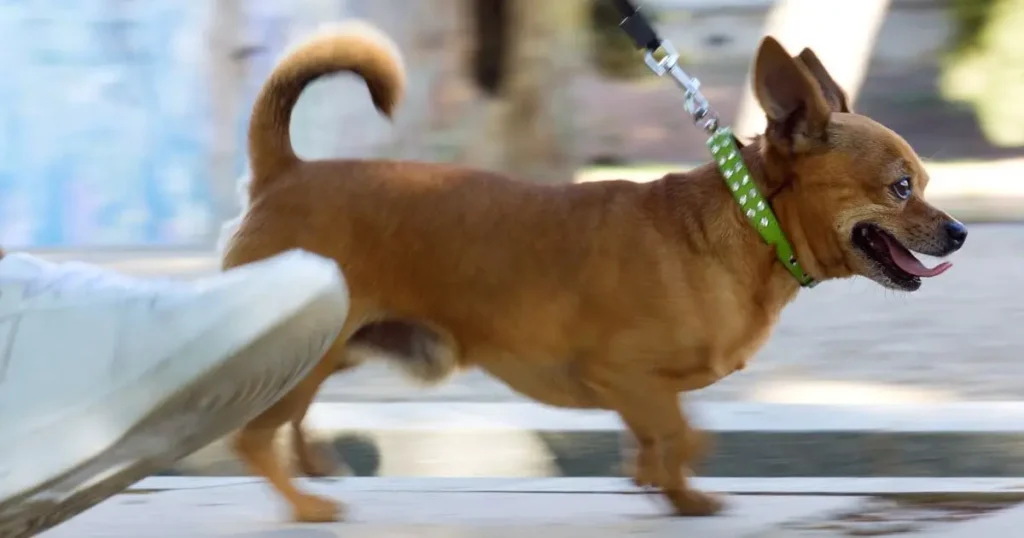
Gently pat the knot out using pat technique and gentle patting as your removal technique, starting from the end with end first approach and working down to the skin, working toward skin with downward motion. Use along with a detangler spray for detangler use and spray application as comfort spray to reduce discomfort, reduce pain, and help the knot separate, help separate, and loosen knots for knot separation.
High-Risk Areas Requiring Extra Attention
Spend extra time with extra attention on areas that rub, friction areas, problem areas, rubbing areas, high-risk areas, prone areas, and common mat locations including behind the ears (ear backs), under the ears (ear undersides), paws (paw area), armpits (armpit area), ankles (ankle area), backs of the legs (leg backs), and around the neck (neck area).
Comprehensive Mat Prevention Strategy
Understanding that tangles turn in to knots through tangle progression and knots turn in to mats through knot progression and mat formation, and knowing mats can cause serious health concerns, matting consequences, health issues, and health risks from discomfort and discomfort issues to nasty skin infections, skin problems, and infections, requires proper technique.
Make sure to brush right down to the skin (brush to skin, brush deeply, deep brushing, and skin level brushing)—which is why a pin brush, not a bristle brush, is recommended (pin brush recommendation, bristle brush not recommended). Brush section by section, also called line brushing (sectional brushing, line brush technique, and systematic brushing) to make sure you don’t miss any knots (avoid miss knots and skip knots). YouTube is a good resource (YouTube tutorial, video resource, and learning resource) to see how line brushing is done (line brush demonstration).
When you discover a tangle or knot (when you discover tangles and find knots), swap to a slicker brush or grooming comb (switch brush, change tools to grooming tools). A comb is ideal and comb ideal for getting out finer tangles (fine tangles and finer knots through comb use). A slicker brush is better and slicker better for knot removal (knot work through slicker use).
Gently pat the knot out (pat technique and gentle patting as removal technique), starting from the end (end first) and working down to the skin (working toward skin with downward motion). Use along with a detangler spray (detangler use and spray application as comfort spray) to reduce discomfort (reduce pain) and help the knot separate (help separate and loosen knots for knot separation).
Want fewer knots? Avoid the shampoo mistake!
Never skip conditioner and understand conditioner importance—always condition with the fleece coats and wool coats for proper fleece conditioning and wool conditioning. This applies whether it’s a rinse off conditioner (rinse-off type), spray-on (spray conditioner), or leave in formula (leave-in conditioner)—all conditioner types and conditioning formula options are essential.
How Shampoo Function Affects the Coat
For shampoo to work and perform its shampoo function and shampoo action, it needs to open the cuticle through cuticle opening, removing some of the protective layer of oils (oil removal and protective oils) in order to clean the coat for coat cleaning and the cleaning process. This can leave the coat rough, creating coat rough conditions and roughness, and make it more prone to knots, becoming knot prone and prone to tangling.
Proper Shampoo Selection and Conditioning
Use a more mild shampoo with mild shampoo choice and gentle shampoo through careful shampoo selection. Apply conditioner after shampoo for proper conditioner application and post-shampoo conditioning. It helps close the cuticle (cuticle closing) and smooth the cuticle (cuticle smoothing and smooth cuticle) to reduce knots forming (knot reduction and reduce matting) and return that protective layer (protective restoration and oil layer restoration).
Coat Products for Enhanced Protection
Coat sprays, spray products, and detangler (detangling products and detangler products) are popular with the wool coat in particular for wool specific needs and wool care. These coat products help to prevent frizz (frizz prevention and prevent frizz), damaged ends (end damage and split ends), and fly-aways (flyaway hair and static hair).
Knot Prevention Products and Brushing Aids
These also help prevent knots as knot prevention products and brushing aids. They are recommended to use during brushing (during grooming) and after brushing (post-brushing and after grooming).
Comprehensive Conditioning Strategy
Never skip conditioner—understanding conditioner importance means always condition with the fleece coats and wool coats for fleece conditioning and wool conditioning, whether it’s rinse off conditioner (rinse-off type), spray-on (spray conditioner), or leave in formula (leave-in conditioner) among conditioner types and conditioning formula options.
For shampoo to work through shampoo function and shampoo action, it needs to open the cuticle (cuticle opening), removing some of the protective layer of oils (oil removal of protective oils) in order to clean the coat (coat cleaning and cleaning process). This can leave coat rough with coat rough texture and roughness, and make it more prone to knots (knot prone and prone to tangling).
Use a more mild shampoo (mild shampoo choice and gentle shampoo through shampoo selection), and apply conditioner after shampoo (conditioner application and post-shampoo conditioning). It helps close the cuticle (cuticle closing) and smooth the cuticle (cuticle smoothing and smooth cuticle) to reduce knots forming (knot reduction and reduce matting) and return that protective layer (protective restoration and oil layer restoration).
Coat sprays (spray products), coat products, and detangler (detangling products and detangler products) are popular with wool coat in particular (wool specific and wool care) to prevent frizz (frizz prevention and prevent frizz), damaged ends (end damage and split ends), and fly-aways (flyaway hair and static hair). These also help prevent knots as knot prevention products and brushing aids, and are recommended to use during brushing (during grooming) and after brushing (post-brushing and after grooming).
These conditioning benefits provide coat protection and cuticle care following product recommendations for proper fleece and wool coat maintenance.
What clippers are rated for the clippers for the ‘Oodle coat?
There are a lot of clipper models and many clippers with numerous clipper options and clipper choices to choose from. But to help shorten your list and help narrow down options for list shortening, narrow down, and reduce options during the clipper selection and selection process, you need a systematic choosing process.
Step 1: Determine Your Oodle’s Coat Type
Work out your oodle’s coat type and determine coat by figuring out (figure out) your oodle coat and doodle coat through coat identification. Coat type first and start with coat assessment is essential—check the coat list above by using the coat list reference to refer to coat list with coat information above from the previous coat list.
Step 2: Match Coat to Clipper Recommendations
Then match their coat to the clipper list below through coat matching and match to clipper process. Use the clipper list reference and clipper recommendations from the clipper list below and following clipper list as your clipper guide for proper coat-based selection.
Finding Coat Compatibility and Appropriate Clippers
This coat-clipper match process ensures coat compatibility and helps identify appropriate clippers and suitable clippers for the right clipper choice through proper clipper pairing and match coat strategies.
Complete Selection Strategy
Successfully navigating the many clippers, clipper models, clipper options, and clipper choices to choose from during clipper selection requires: first, working out your oodle’s coat type (determine coat and figure out your oodle coat and doodle coat through coat identification, making coat type first and start with coat the priority by checking the coat list above using coat list reference to refer to coat list with coat information above from previous coat list); then matching their coat to the clipper list below (coat matching and match to clipper using clipper list reference, clipper recommendations, clipper list below, and following clipper list as a clipper guide).
This selection process and choosing process based on coat-based selection ensures coat compatibility, helping you find appropriate clippers, suitable clippers, and the right clipper choice through proper clipper pairing and coat-clipper match. This approach helps shorten your list, helps narrow down options through list shortening, narrow down, and reduce options when there are a lot of clipper models and many clippers with various clipper options and clipper choices available.
What about clippers for the straight or hair coat?
These 2 coat types and two coat types (coat types) aren’t as often trimmed with clippers, are less often trimmed, and not often clipped for clipper trimming. But can be—they are clippable and can be clipped with appropriate equipment.
Heavy-Duty Clipper Recommendations
A heavy-duty clipper and heavy duty, powerful clipper, or robust clipper will do the job nicely, will do the job well, will work, and work well for effective clipping. You can choose either single speed (single-speed clipper) or 2 speed (two-speed clipper and dual speed) options with speed options available—both will do the job and job nicely.
Essential Preparation Requirements
Just be sure to follow, be sure to, make sure, and ensure you follow standard coat prep (standard preparation, coat preparation, and prep requirements) found below (coat prep below, preparation below, and prep instructions) before you clip. This before clipping, pre-clipping prep, clip preparation, preparation first, and prep before use step is critical.
Complete Clipping Approach
For these 2 coat types and two coat types (coat types) that aren’t as often trimmed with clippers, are less often trimmed, and not often clipped through clipper trimming but can be clipped and are clippable, a heavy-duty clipper (heavy duty, powerful clipper, and robust clipper) in either single speed (single-speed clipper) or 2 speed (two-speed clipper, dual speed, and speed options) will do the job nicely, will do the job well, will work, and work well for effective clipping.
Just be sure, be sure to, make sure, and ensure you follow standard coat prep (standard preparation, coat preparation, and prep requirements) below (coat prep below, preparation below, and prep instructions) before you clip for proper before clipping, pre-clipping prep, clip preparation, preparation first, and prep before use procedures.
Conclusion
Maintaining a well-groomed Labradoodle coat isn’t rocket science, but it does require commitment and consistency. Whether your dog has a fleece, wool, or hair coat, the fundamental principle remains the same: regular attention prevents major problems. A few minutes of daily brushing beats hours of dematting any day of the week.
The reality is that most grooming disasters happen gradually. You skip a day here, miss a week there, and suddenly you’re facing mats that require professional intervention and possibly a complete shave-down. Understanding your specific dog’s coat type and adjusting your routine accordingly makes all the difference between manageable maintenance and constant frustration.
Don’t underestimate the importance of proper tools, quality products, and correct technique. Using the right brush, conditioning after every bath, and learning to line brush properly aren’t just nice-to-haves—they’re essentials that determine whether your Labradoodle keeps that gorgeous coat or ends up clipped short out of necessity.
If home grooming feels overwhelming, there’s absolutely no shame in relying on professional groomers. Just maintain regular appointments and handle the basics between visits. The goal isn’t perfection—it’s keeping your Labradoodle comfortable, healthy, and looking their best. Establish your routine early, stick with it consistently, and that beautiful coat will reward your efforts for years to come. Your Labradoodle deserves it, and honestly, the bonding time during grooming is worth every minute.
FAQ
How to keep Labradoodle hair from matting?
Brush dog daily using a slicker brush and metal comb for grooming, coat care, hair maintenance, prevent matting, and remove tangles.
How often should a Labradoodle be groomed?
Grooming a Labradoodle regularly every 6-8 weeks maintains coat health, prevents matting, preserves teddy bear appearance, and suits their unique coat type.
What is the downside to a Labradoodle?
Labradoodles form strong bonds with families, and while positive, being left alone for extended periods can cause separation anxiety, destructive behaviors, and excessive barking.
Should I brush my Labradoodle wet or dry?
Use a slicker brush to gently brush wet fur during grooming. A detangler helps, or you can brush just before a bath for easier fur care.
How often should I clean my Labradoodles ears?
Australian Labradoodle ears vary in discharge; some need daily or weekly cleaning. Regular ear care prevents infections and maintains ear health during grooming.
